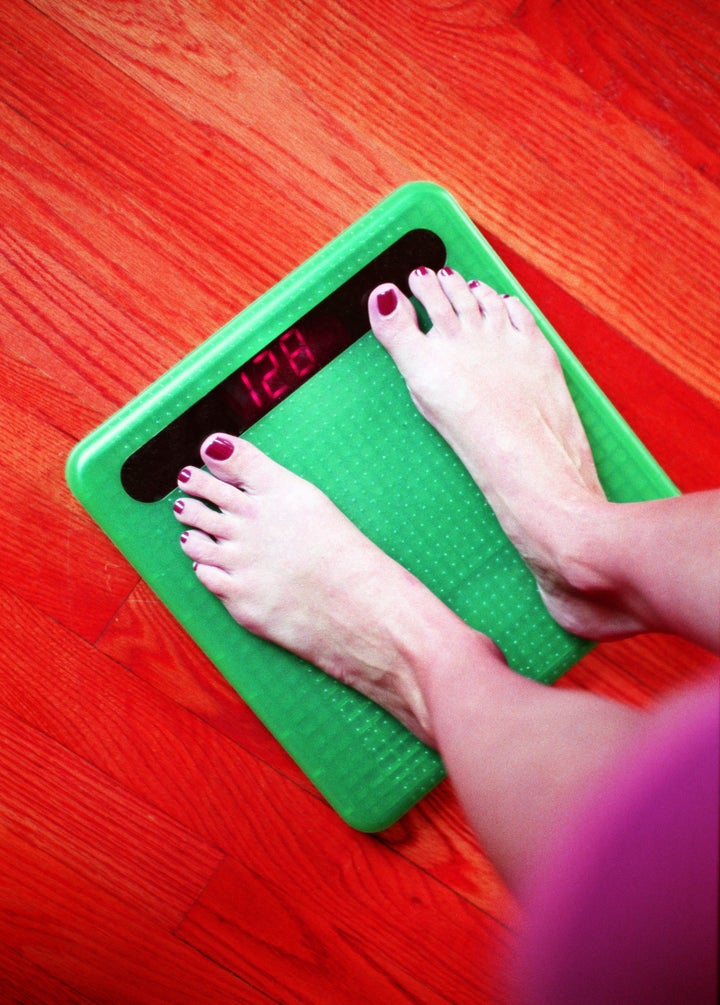
Diets should be all about losing fat, gaining better eating habits and exercising more. But those very low-calorie diet plans that contain less than 1,200 calories a day may cause you to lose something your body really needs: muscle.
When you get on the scale and notice that the needle is moving downward, you assume that you are losing fat because this is what all diets guarantee. Unless you are eating enough protein and engaging in regular physical activity, though, the loss of pounds may include the loss of muscle from all over your body. So what, you may think? Weight loss is weight loss, and that is the desired effect.
Before you admire your skinny arms and thighs, however, remember that muscle is the organ in your body that uses calories not only when you are moving but also when you are resting. This is one reason why heavily muscled body builders can consume so many more calories than ordinary mortals. When they are sleeping their muscles are using more calories than yours or mine.
You may be losing your muscle and you won't even know it, because muscle loss is silent. There aren't any non-invasive tests to determine how much muscle is being lost from your body. The old adage holds true: use it or lose it.
But what we do know is that if you are over 40, your muscle loss has begun. This process continues as you age, and women may experience it to a greater degree after menopause. By age 60, you may be among the 30 percent of people who are suffering from chronic muscle loss known as sarcopenia.
It is not just age, lack of hormones and diets that cause muscle loss. Are you a postmenopausal woman that has been diagnosed with the early stages of bone loss (osteopenia) or full-blown bone loss (osteoporosis)? If so, 25 percent of you with osteopenia and 50 percent of you with osteoporosis are also suffering from muscle wasting.
Do you still smoke? Many people believe that smoking will keep them thin, but muscle loss is another unwanted health risk of smoking. When women who were heavy smokers had their body composition examined in an MIT study, their normal weight bodies revealed a high fat content. They were not fat on the scale, but they had lost so much muscle that a substantial percent of their weight came from their fat stores.
Are you exercise phobic? Maybe you ought to start saving for a wheelchair, because a lack of activity will slowly but surely diminish your muscle mass. Anyone who has had a limb in a cast knows how quickly muscle is lost from inactivity. What do you think sitting most of our lives is doing to our whole body muscle mass?
Moderately intense exercise, especially strength and/or resistance training, is critical in the battle to prevent muscle loss, especially while dieting. Yet many diet plans think they are doing you a favor by promising you successful weight loss without addressing the need for physical activity. Alas, it is not just some diet programs that support avoiding exercise. Some of my weight-loss clients have told me that they avoid exercises that build muscles because it makes their arms and thighs "look fat." What they do not realize is that by not building muscle their arms and legs may end up looking flabby as muscle begins to disappear.
Fortunately, the solution to maintaining muscle mass while losing weight requires only three things:
1.Keeping calorie intake at around 1,200 calories or more a day so the body doesn't turn to muscle as a source of energy. Fasting or liquid diets with very few calories are particularly effective in producing muscle loss because of their low calorie content.
2.Consuming protein in adequate amounts. The daily requirement for protein is 0.8 grams per kg of body weight. Figure out how much you need by first changing your weight from lbs to kilograms. Do this by dividing your weight in pounds by 2.2. Then multiply your weight in kilograms by 0.8. If you lose a substantial amount of weight, say 100 pounds or more on your diet, your protein needs will decrease. (If you decide to become a professional body builder they will increase.)
3.Exercising as often as possible. Strength and/or resistance training must be part of your routine. It is not necessary to get a personal trainer or use elaborate machines to build muscle. For example, yoga will build muscles because many routines use certain muscles of the body to hold up or balance other parts. Many gyms, including the Y, offer classes using weights, exercise balls or resistance bands to work and strengthen muscles. Exercise videos also teach methods for muscle strengthening that can be done in your living room. Lastly, don't overlook the pool. Water is heavy and a perfect medium for increasing the muscles all over your body, while eliminating impact on your joints and spine.
This emphasis on becoming stronger as you become slimmer seems to contradict fashion's standards for beauty. We have all seen in magazines the impossibly thin models whose arms and legs don't seem to have an ounce of fat or muscle on them. But who among us can afford to buy the clothes they model? And who among us can afford to mimic their diets and minimally muscled bodies? The cost of both is too great.